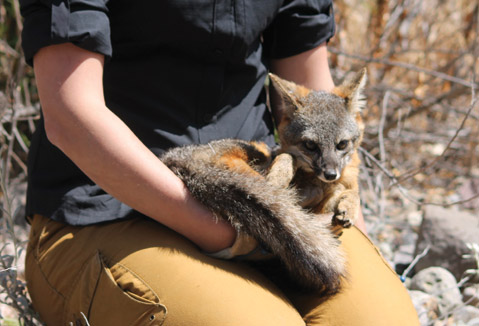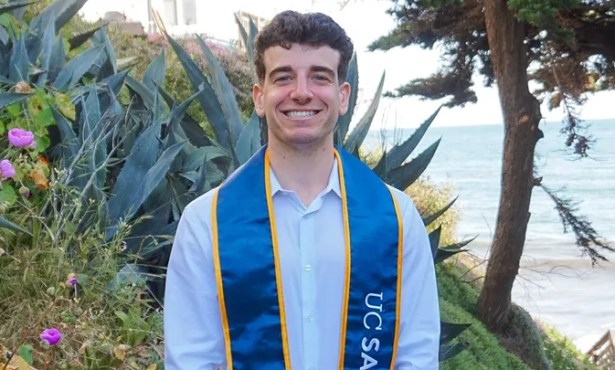Channel Island Foxes Back in Action
Recovery Effort Deemed Wild Success

If you’ve been out to the Channel Islands recently, chances are you’ve seen the foxes — they’re small, curious, and undeniably cute. Fifteen years ago, however, seeing one in the wild would have been extremely rare. Over-predation by golden eagles — attracted to the islands by the abundance of nonnative sheep and feral pigs — had nearly wiped out the bite-sized canids, driving the three subspecies’ combined population down to less than 100 individuals by 1999.
But now, thanks to a monumental effort by the National Park Service (NPS) and The Nature Conservancy, the islands’ fox populations have risen to more than 1,400 total— close to the healthy historical levels — and have held steady for almost five years. “Given the chance to restore the population … the foxes are coming back. We just created the conditions for them to recover,” said Kate Faulkner, chief of natural resources management for the Channel Islands National Park. “No one thought it would be as fast as it has been.” The program, which charged ahead on NPS emergency funding until it was eventually granted a bigger budget, tackled the foxocalypse on three fronts: a meticulously careful captive breeding program for the surviving foxes, systematic extermination of the invasive pigs by contract hunters, and the humane relocation of the ecosystem’s golden eagles to locations in Northern California.
By all accounts, each tactic was a resounding success. The captive breeding program began with around 35 foxes and released more than 250, the islands are pig-free, and the predatory goldens have been replaced by relocated bald eagles, who prey on fish, not foxes. The Nature Conservancy’s biologists and volunteers still monitor the island’s fox populations, periodically trapping them to perform quick checkups, which some “trap-happy” foxes have realized means a free meal and flea comb with only minor manhandling and imprisonment. The final step for the two organizations is to finally remove the Channel Islands foxes from the endangered species list, a long but important process with the Fish and Wildlife Service, said Tim Coonan, lead biologist for the park. “You gotta call a victory a victory when you see it,” Coonan said.



